Croydon looking – almost – pretty in the snow.
tram
Gmunden trams, Austria
Another old article written for the journal of the Cambridge University Railway Club, this time looking at a small tramway in Austria which I visited in January 2003.
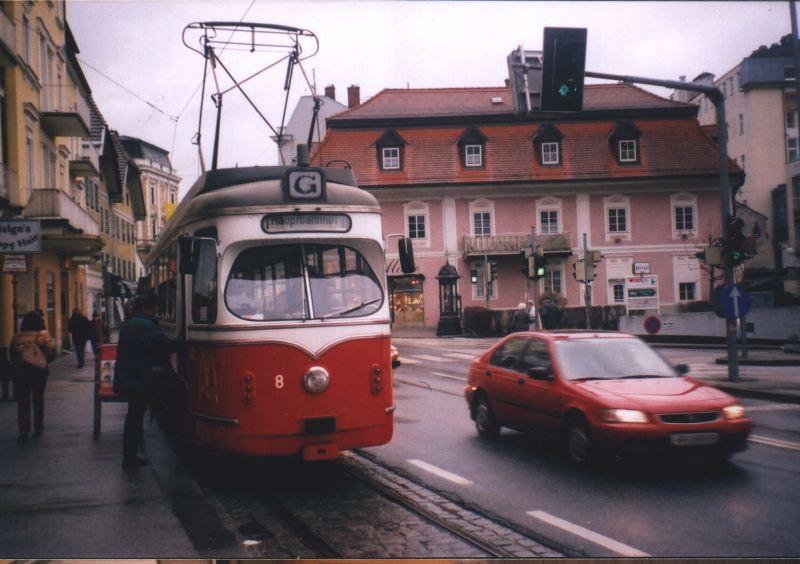
Gmunden, 4 January 2003
The accuracy of claims to the title of “the world’s smallest tramway” could doubtless form the basis of lengthy debate. One claimant to the title is is the 2·3 km line in the small Austrian town of Gmunden. The single route system is also one of the world’s steepest tramways, with gradients of up to 9·6%.
Gmunden stands on the shore of the Traunsee lake in Upper Austria, and has around 13 000 residents. The town has two railway stations, the dual-gauge Seebahnhof terminus by the lake, and the Hauptbahnhof on the Austrian Federal Railways (ÖBB) Attanag-Puchheim to Stainanch Irding line. This is some distance from the town centre, and 60 m higher than the lake. Linking the town centre with Hauptbahnhof is a metre-gauge tramway operated by Stern & Hafferl.
The line opened August 13 1894, with four trams. It is electrified at 600 V DC, and it was the company’s steady demand for power which brought an electricity supply to the town.
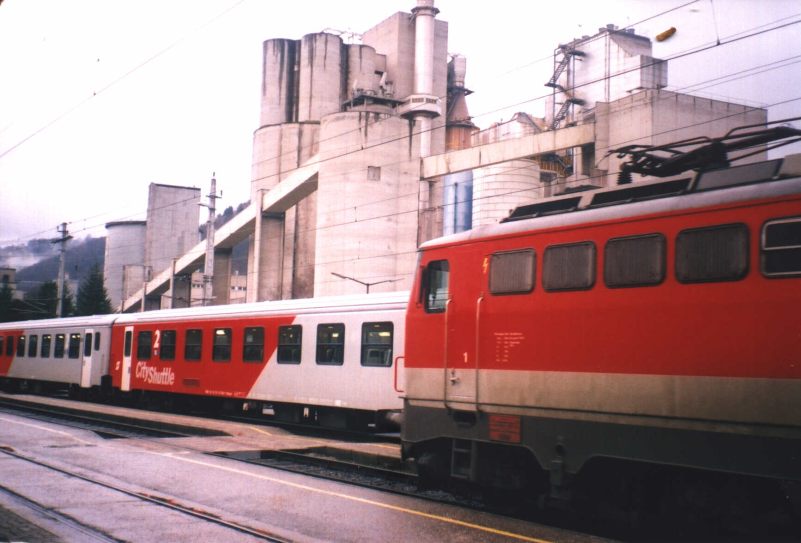
ÖBB trains at Gmunden station. The town centre is a lot prettier than this!
Stepping off the train at Hauptbahnhof, the tram stop is found straight opposite the station entrance, a common arrangement in Continental towns. Crossing the road, visitors will find the tram waiting under a line of tall trees. The line to the town heads off to the left, and to the right some disused track extends over a level crossing, stopping amid the weeds in a disused railway goods yard area.
![Click to enlarge [Tram]](/images/rail/at-gmunden1small.jpg)
The tram stop opposite the entrance to Gmunden station, looking towards the town centre.
A half-hourly serve was running when we visited, and the red and white liveried tram was waiting to meet passengers from the train. Services were being operated by car number 8, a typical European double-ended single car. Despite the somewhat incongruous advertising livery promoting a well-know hamburger chain, next to the doors are symbols telling passengers not to eat or drink on-board.
![Click to enlarge [Tram]](/images/rail/at-gmunden5small.jpg)
Tram 8 about to depart from the town centre.
Tickets are bought from the driver on boarding the tram. There were two of us travelling together, and we were sold a €2·60 family day ticket. By the driver was a pile of leaflets advertising a model railway exhibition at Seebahnhof, but unfortunately we were too early in the day to visit. There are 32 seats, and including us there were six passengers on board. The return trip had more custom, and not everyone was travelling all the way between the termini.
Leaving Hauptbahnhof the tram runs on segregated ballasted track alongside the road. The line is single track, with two passing places, and forms a rough Z-shape as it descends to the lakeside. The maximum gradient is an impressive 9·6%, and quite noticeable.
![Click to enlarge [Tram stop]](/images/rail/at-gmunden3small.jpg)
Waiting for a tram from Franz-Josef Platz to the main station.
There are six intermediate stops along the route, marked by ornate metal signposts. All are on the left going downhill, allowing the use of trams with doors on only one side.
The depot stands alongside the line to the right, and part of the rest of the fleet of trams was visible inside as we passed. All the vehicles except number 8 were obtained second hand from other tramways. Tram number 5 was built in Graz in 1911. Our vehicle, number 8, was built by Lohner in 1962. Numbers 9 and 10 were built by Duewag in 1952 for the Vestische tramway in Germany, where they were numbers 347 and 341. The two cars were moved to Gmunden in 1974, and entered service in 1977 and 1983. Open-sided vehicle number 100 was built in 1898. There are also some works cars. The line’s five staff both drive and maintain the vehicles.
![Click to enlarge [Tram]](/images/rail/at-gmunden4small.jpg)
At Franz-Josef Platz tram terminus.
The line twists and turns alongside the main road, then disappears down a back street. There is a mix of reserved track and on-street running, and at some points the tram is on the wrong side of the road. On the return trip an on-coming car pulled onto the pavement to let us pass.
Trams from the station terminate in Franz-Josef Platz, opposite a lakeside promenade. The line originally continued a further 200 metres to the main square by the town hall, opposite a pier served by steamers on the lake. Unfortunately this required negotiation of an increasingly busy road junction, and so the line was cut back in 1975; a local campaign prevented complete closure. Beyond Franz-Josef Platz the overhead wires are still in place, and the route of the rails can clearly be seen under the road surface. There is some talk of re-instating the line, but negotiating the junction could be tricky. In the past there were proposals to extend the line over the bridge to the Traunseebahn station, a few minutes walk away. A line to the nearby town of Altmünster was also planned.
The line is one of the more attractive tramways I’ve visited (you can tell you aren’t in Croydon!), and would have been a great place for photography if we had had more time.
References
Tramways & Light Railways of Switzerland & Austria (RJ Buckley 1984)
Light Rail in Europe (Taplin, 1995)
Mariazellerbahn, 6 January 2003
![Click to enlarge [Train]](/images/rail/at-mariazell1small.jpg)
An electric loco on the 760mm-gauge Mariazellerbahn.
Trams in Debrecen, Hungary
Some notes complied after a visit in summer 2005, and published in Eagle, the journal of the Cambridge University Railway Club, of which I’m a life member.
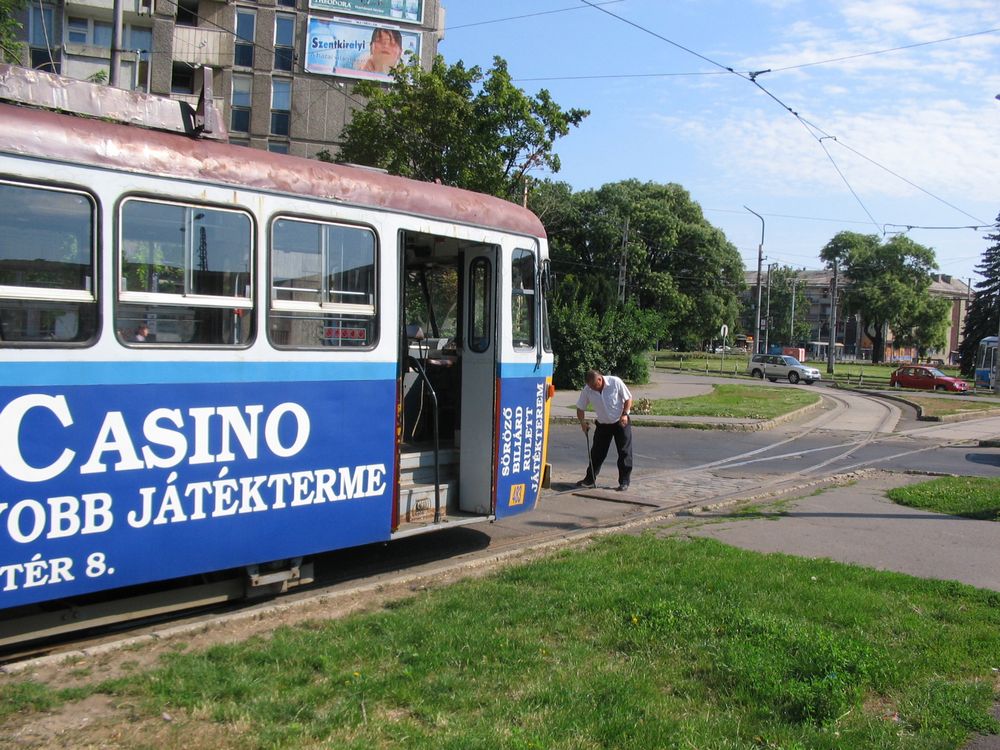

Tram 510 is one of the 11 Ganz-Hunslet cars built for Debrecen. The Small Church was once crowned with an onion-shaped dome, but it was badly damaged by a storm in 1907. Two years later a further storm wrecked the repairs, so the locals took the hint from above and stuck with the truncated stone tower instead.
If the council is to be believed, Debrecen’s population of around 210 000 makes it Hungary’s second largest city, after Budapest. On the other hand, proud residents of the northern city of Miskolc have other ideas, as they will tell tourists on their narrow gauge railway who let slip that Debrecen is next on the itinerary.
Railways first arrived in Debrecen in 1857 with a link from Pest (now one half of Budapest). Today visitors arrive at a large 1961 replacement for an ornate building which was built in 1900 but destroyed by bombing in 1944. The current station’s main hall contains two vast frescos by Endre Domanovszki, showing happy peasants working in the fields of the Great Plain which stretches for mile after mile across the south and east of the country.
Stepping outside the station and crossing the road brings the passenger to the conveniently-located the terminal loop of the city’s single tram line. Unimaginatively branded Line 1, the standard-gauge route run by city transport company DKV is the sole survivor of six which once crossed Debrecen. The first steam tramway opened in October 1884, electric trams arrived in 1911, but by 1975 all but the one of the lines had been supplanted by buses of the diesel or electric persuasion (and some which are both, merrily carrying on beyond the wires). The remaining line is well used, providing a frequent and useful link along an axis running from the station, through the main square, to the university, park and hospital.
In recent years the local authority has undertaken a major regeneration of the town centre in an effort to raise the city’s national and international profile and to attract the tourist forint. Perhaps as a result of this, each of the 13 tram stops has information in Hungarian, German and English, complete with a route map, details of the service frequencies and the vital information – so often forgotten on even the best-run light rail systems – on how people who aren’t familiar with the system can buy a ticket. These were available from the driver for HUF160, or in advance from various kiosks at a slightly lower price. Few people seemed to need to buy tickets from the driver, and trams are boarded through all doors. There are two DKV offices, one helpfully located within the station loop, which are the only outlets able to sell a HUF500 day pass valid on all the city’s trams and buses.
The stops have passenger information screens on them, built into ‘heritage-style’ signs, which is unusual for a long-established Eastern European tramway. Following the pattern of the Budapest metro, these screens tell you how long ago the last service left, not when the next will depart. This isn’t the most useful way of doing things, but it can be used in conjunction with the frequency information to estimate waiting times, which were short anyway. Services run from 04:30 to 23:00, with frequencies ranging from a peak of 2-4 min down to to 8-10 min at the extremities of the day.
Trams

The high frequency of the service means there were always trams waiting in the station loop when we passed. The Bauhaus-style tramway ticket office is in the centre of the loop, the MÁV railway station across the road on the right. The city of Miskolc has a very similar loop outside its main station, and also has a single tram line serving the main street.
We noticed an interesting modern-looking tram, so decided to let the first service go so we could take a look. It was one of ten six-axle KCSV6 series vehicles supplied by Ganz-Hunslet of Budapest in 1997, after the production of a prototype car (now no. 500) in 1993. Though it felt narrow, the KCSV6 is 2 500mm wide, falling between the 2 300 mm common on many older European systems and the 2 650 mm generally adopted for modern trams and new lines. The Debrecen tram’s interior is designed for standing passengers, having 28 single seats either side of a wide aisle. On-board passenger information displays show the name of the next stop.

One of the Ganz-Hunslet trams in Kossuth Square passes the Calvinist Great Church, Debrecen’s signature building.
The tram was designed in an attempt to produce a cheaper vehicle than the big western suppliers can offer to the Eastern European market, but no further orders materialised. Traditional tramways have so far survived in many Eastern European cities, but they are often in a poor state. There is no money available to purchase new “western” trams from the likes of Alstom, Bombardier or Siemens, but existing vehicles are often life-expired and offer a poor travelling environment as access to private transport increases.
The problem is widespread, and in the former East Germany the Leipzig tram company has developed a tram it calls Leoliner, which keeps costs down by using Tatra-designed tram bogies under a new body. Leipzig is now hoping to sell its Leoliners across eastern Europe, in competition with the big suppliers (Halberstadt in eastern Germany was the first external customer, putting five metre-gauge Leoliners into service in October 2006).
In Debrecen ten older FFV “two-rooms-and-a-bath” trams also remain in use, the surviving examples dating from the 1970s. Nicknamed “Bengálik”, these were developed in the 1960s by Budapest’s tram maintenance depot for use in the capital. The design was then adopted by Debrecen, which also built similar vehicles for Miskolc and Szeged, the two other Hungarian cities where tramways remain. These very dated vehicles are rather noisy, quite worryingly so in one case. Electrification is at 600 V DC, and all DKV’s tram are double-ended, though as the line has turning loops and outside platforms it would seem possible to use single-sided vehicles, as ran in the city in the past.
Along the line
A couple of sidings trail into the turning loop outside the station, while a single track branch from the depot runs in from an adjacent street, linked to the running line by a triangle giving access in and out.
Departures are very frequent, with three or four trams waiting in the loop to load up in a turn-up-and-go service. The line is double track throughout, except a short section round the park, and has 13 stops.

In the city centre the tramway crosses a trolleybus route at a busy junction, where the extra electrical equipment needed for rubber-tyred vehicles stands out. The locally-built trams with two four-wheel cars linked by an articulated section are showing their age, and can be rather noisy inside.
After the turning loop, the line follows reserved track through Petofi Square, which is named after a poet who lived in a house on the site now occupied by the station in 1843-44. The trams continue along Piac Utca, a road shared with other traffic. By the Small Church the trams make a right angled crossing with the city’s trolleybuses, which are also covered by the day ticket. As well as conventional electric trolleybuses, DKV has some Solaris/Ganz-Transelektro dual mode vehicles with diesel engines, and despite the presence of overhead at least one trolleybus went past in diesel mode.
The trams then continue through Kossuth Ter, the city’s main square, which has been modernised and pedestrianised to produce a pleasant car-free area. Money has been spent on public art and generally tidying the city centre up, which produces a pleasant environment which other cities could learn from.
The line then passes to the right of Debrecen’s signature building, the Calvinist Nagytemplom, or Great Church. In 1849 Kossuth declared Hungary independent of Austria in the church. The revolution was defeated by Russian military intervention, but now it is difficult to walk more than a short distance in Hungary without passing a Kossuth street, square, statue or monument.
Trams then continue down the middle of Peterfia Utca and Simonyi Utca to the Nagyerdei park, which the line enters and bisects. The reserved track through the park is double track, but only one line is used, the stops being served in one direction only as all trams travel anti-clockwise.

Tram passing the spa in the park. The double track cuts across the middle of the park, then circumnavigates one side of the tree-lined grounds along the perimeter road. Only the outermost track appeared to be in use on the section outside the thermal baths.
The route passes thermal baths fed by sulphurous springs, then at the far side of the park it swings left, completing a circuit of the western half of the park on a single track line along the perimeter road. Single platform stops serve the surrounding Kossuth Lajos university and hospital district. With potential traffic generators at either end of the line, and the city centre in the middle, the tramway is an extremely useful way of getting about, providing an excellent way to see the city.
On arriving in the park we went in search of the zoo and its narrow gauge railway. Unfortunately the zoo was closed. Peering over the fence some zebras were spotted [no, any fule kno they were striped] but no trains, so we boarded another tram for the city centre. A return trip, from the station, round the park and back to the station, takes 36 min for the journey of about 9 km.
More information
- There is a impressive amount of bilingual information on Hungarian trams for enthusiasts at Hamster‘s Trams of Hungarywebsite.
- City transport company DKV has a surprising amount of data, including fleet lists and vehicle specifications (in Hungarian).
- Online tramspotting is possible using a controllable webcam in Kossuth Square.
- Plus of course the Rough Guide to Hungary and Lonely Planet Hungary are handy for planning a visit. If I could remember its name, I’d recommend a hotel where a one-armed man served us ham and eggs for breakfast, as their German names were the only food which he and us could all name in a common language.
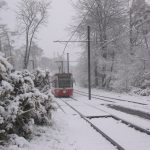

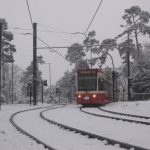
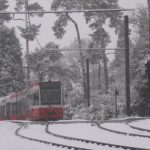
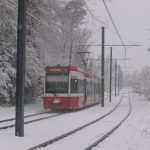
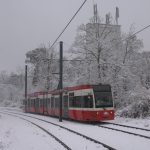
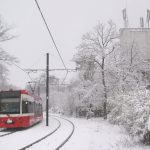
![Click to enlarge [Steam train]](/images/rail/at-steam01small.jpg)





